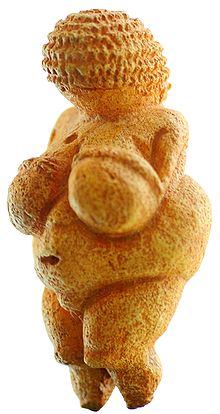I am the mother of the earth
Who was once a lost little lamb
Following sheep in order to survive
I knew I had a greater purpose in life
I have found my faith once again
In Our Lord Saviour Jesus Christ
He has always walked with us
Right here beside us
He has heard our prayers for change
Through the long hours of the night
He has seen our tears shed
He has seen all our sins
He said he would rise again
He is now a she
Now our world can rebuild
I am the mother of the earth
Chosen to be from birth
Now the healing for all
Can begin.

Venus von Willendorf, 24,000–22,000 BCE
A mother goddess represents, or is a personification of, nature, motherhood, fertility, creation, or destruction, or embodies the bounty of the Earth. When equated with the Earth or the natural world, such goddesses are sometimes referred to as Mother Earth or as the Earth Mother. Figurines representing these figures, including the Venus of Willendorf, are among the oldest human artifacts, but they became particularly numerous and widespread during the Neolithic period, as humans began to use wild cereals and evolved agricultural societies. The older Earth Mother statuary tradition continued, but related genres also began to emerge, including a "bird and snake" group associated with water and a "stiff nude" form associated with death. In some accounts, the first Greek deity was Gaia, who created herself out of primordial chaos. Merlin Stone published "The Paradise Papers: The Suppression of Women's Rites" in the UK, but the book is probably better known by its 1976 American title, "When God Was a Woman." It described women in early cultures as sacred entities, leaders, and benevolent matriarchs, and posited that ancient patriarchal tribes overturned their societies and re-interpreted their traditions to justify male-dominated structures; for instance, the book claims that the Old Testament was an attempt to mask feminine symbolism in masculine terms. In an earlier book, "The Hebrew Goddess," anthropologist Raphael Patai claimed that Jews had venerated such divinities as Asherah, Anath, Astarte, and Ashima.
ReplyDelete